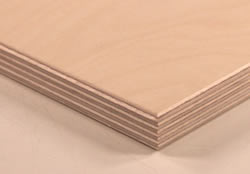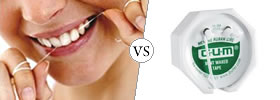Difference between Rubber Wood and Plywood
Key difference: Rubberwood is essentially the wood that comes from the rubber tree, the Pará rubber tree to be specific. The Pará rubber tree is scientifically known as Hevea brasiliensis. As the wood of a rubber tree, one would expect it to be soft and springy like, well, rubber. However, rubber wood is essentially a hardwood. Plywood, on the other hand, is a type of manufactured wood panel. It is made by gluing together plywood layers, also called veneers. Softwood plywood is a type of plywood created from various types of softwood.
 Rubberwood is essentially the wood that comes from the rubber tree, the Pará rubber tree to be specific. The Pará rubber tree is scientifically known as Hevea brasiliensis. As the wood of a rubber tree, one would expect it to be soft and springy like, well, rubber. However, rubber wood is essentially a hardwood.
Rubberwood is essentially the wood that comes from the rubber tree, the Pará rubber tree to be specific. The Pará rubber tree is scientifically known as Hevea brasiliensis. As the wood of a rubber tree, one would expect it to be soft and springy like, well, rubber. However, rubber wood is essentially a hardwood.
Wood is mainly classified into two categories: hardwood and softwood. Hardwood is the wood that comes from an angiosperm tree. This is a type of tree that has seeds that are enclosed, be it in pods, a shell, a covering or in a fruit. For example, apples or nuts and seeds like acorns and walnuts. These types of seeds allow birds and insects to be attracted to the flowers of the tree and be able to carry the pollen to other trees. This is also the reason why hardwood trees are not often bunched together but are spaced apart and often have other trees in-between them.
Most hardwood trees are also deciduous is nature. A deciduous tree is a tree that loses its leaves annually. Hardwood trees are also slower to grow, taking their own time. Due to this, most hardwood is dense. This is also the reason that hardwood is expensive, as it takes longer to grow. Some famous hardwoods include maple, balsa, oak, elm, mahogany, and sycamore.
The Pará rubber tree is essentially grown in plantations for the latex it produces, which is then harvested and used in the production of commercial rubber. However, after 25 – 30 years, the production of latex in the tree becomes very low; hence the tree is often cut down and replaced with another, which would be more financially viable.
Previously, the felled rubber tree would be burned, as there would be no further use for it. However, in lieu of growing environmentalism, the wood from the felled rubber tree is now recycled and used in various applications. The most common applications of the rubber wood include furniture, toys and kitchen accessories. Like all hardwoods, rubber wood comes in varying degrees of quality.
Furniture made with hardwood tends to be long-lasting and durable. Due to this hardwoods are generally accepted as being the highest quality wood. However, with the high density of most hardwoods, they have a tendency of splitting, due to which the carpenter has to take extra care while making a piece of furniture. Despite this, some hardwoods are preferred for a particular use. The advantage of rubber wood is that it s a dense grain that is easily controlled in the kiln drying process. This makes is easily manageable in the kitchen. However, the rubber wood is not suitable for outdoor usage. Furthermore, rubber wood is touted over other types of wood because as it is essentially a recycled wood, it is more eco-friendly.
 Plywood, on the other hand, is a type of manufactured wood panel. It is made by gluing together plywood layers, also called veneers. These veneers are glued together with adjacent plies having their wood grain at right angles to each other. This allows them to form a composite material. Cross-graining, i.e. having the wood grain at right angles to each other, reduces the tendency of wood to split, as well as reduces expansion and shrinkage. It also makes the strength of the panel consistent across both directions.
Plywood, on the other hand, is a type of manufactured wood panel. It is made by gluing together plywood layers, also called veneers. These veneers are glued together with adjacent plies having their wood grain at right angles to each other. This allows them to form a composite material. Cross-graining, i.e. having the wood grain at right angles to each other, reduces the tendency of wood to split, as well as reduces expansion and shrinkage. It also makes the strength of the panel consistent across both directions.
Plywood has various advantages over traditionally wood. It is flexible, inexpensive, workable and re-usable. Furthermore, it can usually be manufactured locally. Plywood is also resistant to cracking, shrinkage, splitting, twisting and/or warping. It also has a high degree of strength. All these attribute combine to make plywood one of the most widely used wood products.
Plywood is further divided into:
- Softwood plywood - Is usually made either of cedar, Douglas fir or spruce, pine, fir or redwood and is typically used for construction and industrial purposes.
- Hardwood plywood – Made from hardwood, often from birch and used for demanding end uses. Birch plywood has excellent strength, stiffness and resistance.
- Tropical plywood - Made from mixed species of tropical wood.
- Special-purpose plywood
- Aircraft plywood
- Decorative plywood (overlaid plywood)
- Flexible plywood
- Marine plywood
- fire-retardant plywood
- moisture-resistant plywood
- sign-grade plywood
- pressure-treated plywood
Image Courtesy: europack.co.in, unitedplywood.in









Add new comment